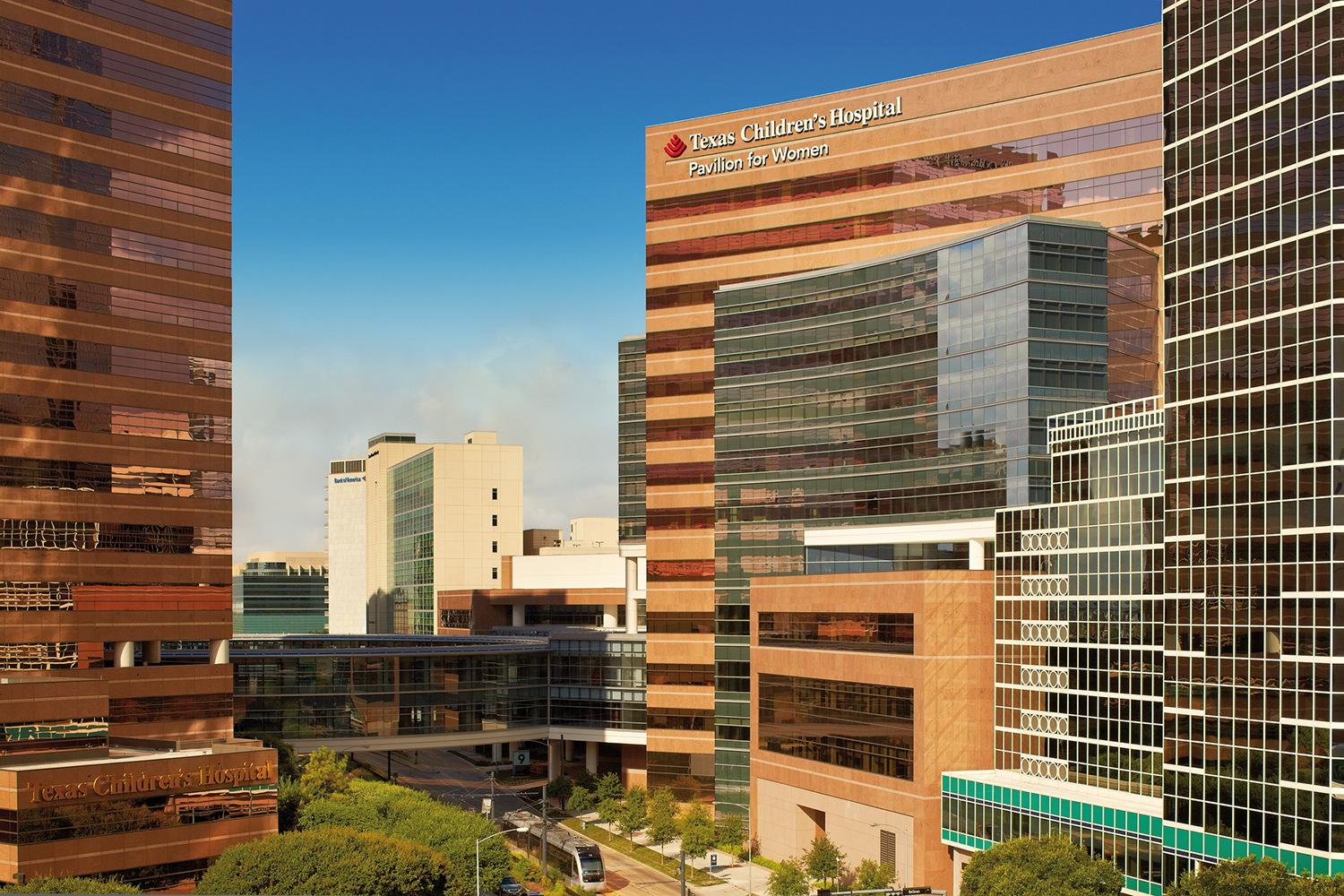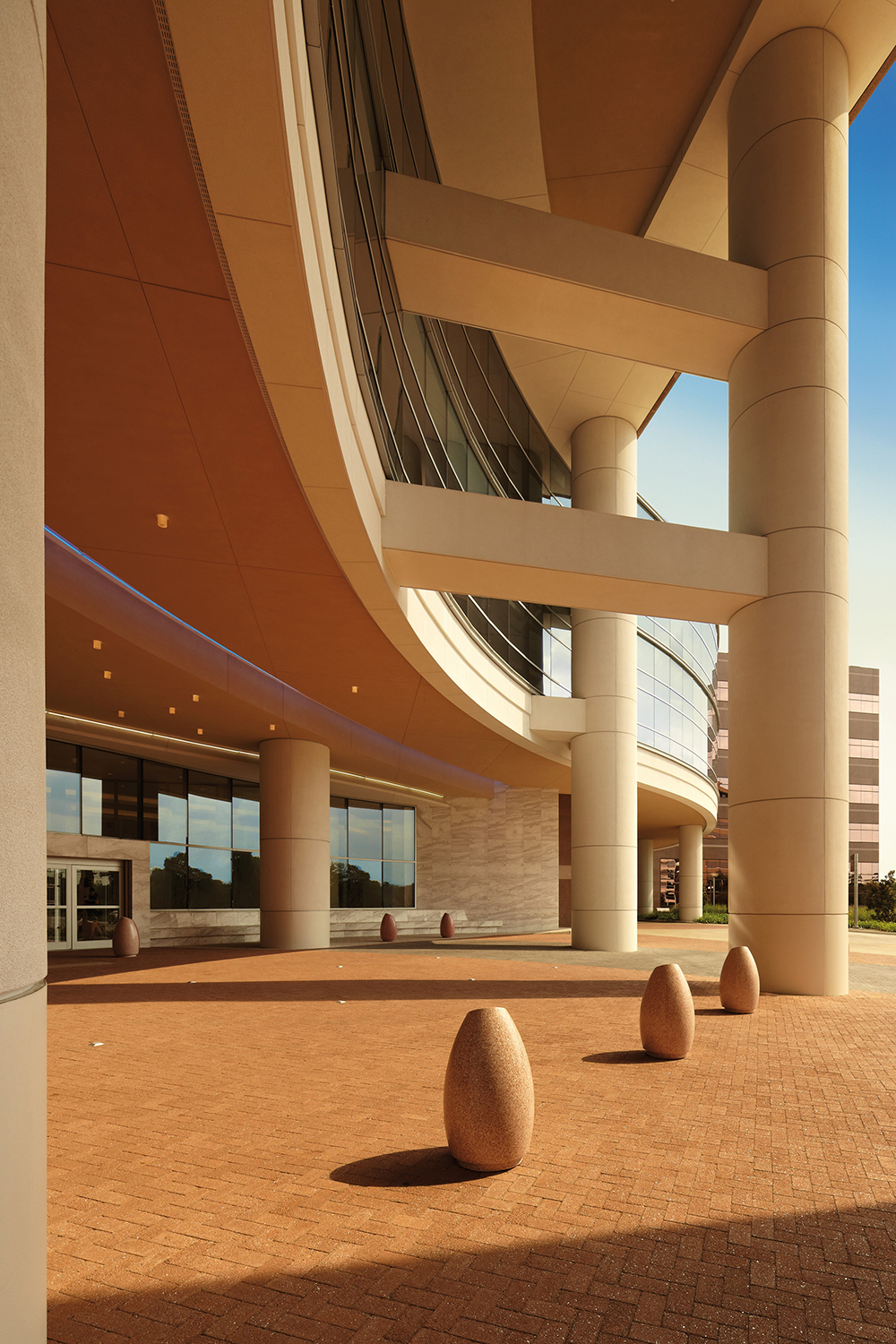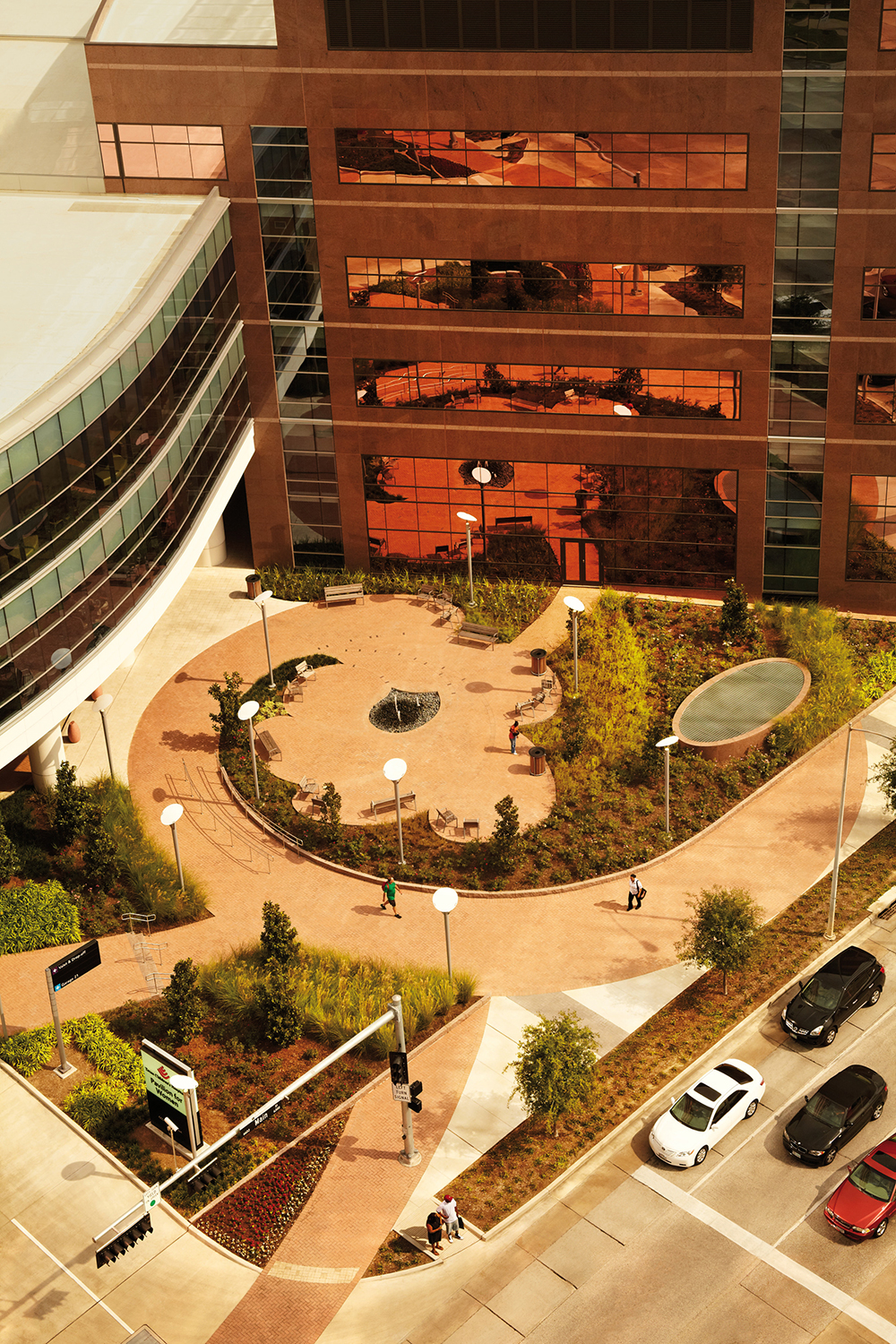Dedicated women's facility accommodates Houston birthing needs
When Texas Children’s Hospital’s (TCH) adult healthcare partner—who filled over 25 percent of TCH’s 138-bed NICU—decided to stop delivering babies, the hospital decided to begin its own comprehensive obstetrics/gynecology program focused on high-risk births. The Pavilion for Women was born.
The 796,000 sf, 15-story multi-use hospital includes a maternity center, surgical and radiology services, clinic and office spaces, NICU, and a four-level underground parking garage.
The building’s base is structured for both a women’s tower and a future pediatric tower; it is connected to adjacent buildings by a two-story curved bridge crossing over Houston’s light rail system and a busy thoroughfare. That bridge also offers a signature element to the TCH campus: a safe way to travel between buildings.
The incredibly tight urban site presented many challenges for long-term development of over 1.7 million sf, beginning with the deepest excavation in the area (next to high-rise structures), to creating two front doors for each tower to have separate identities, to leaving sufficient lay-down area to build a future 19-story tower and room for future tower expansion. But this was a particularly efficient project; the team, using Building Information Modeling (BIM) and in collaboration with contractors and consultants, was able to reduce RFIs by 17 percent and change orders by 59 percent from TCH’s previous project.
The building’s interior exhibits a sophisticated palette for adult patient needs, including granite-faced precast concrete exterior wall panels. Following USGBC LEED principles, the structure utilizes natural light, energy-efficient building systems, and environmentally friendly materials.
The new hospital’s identity—and relevancy—is further reinforced by its active, visible presence on the TCH campus, a new service line to TCH that expands the reach to the city’s adult women’s population, and a quickly surpassed birth projection rate, after only 18 months.





